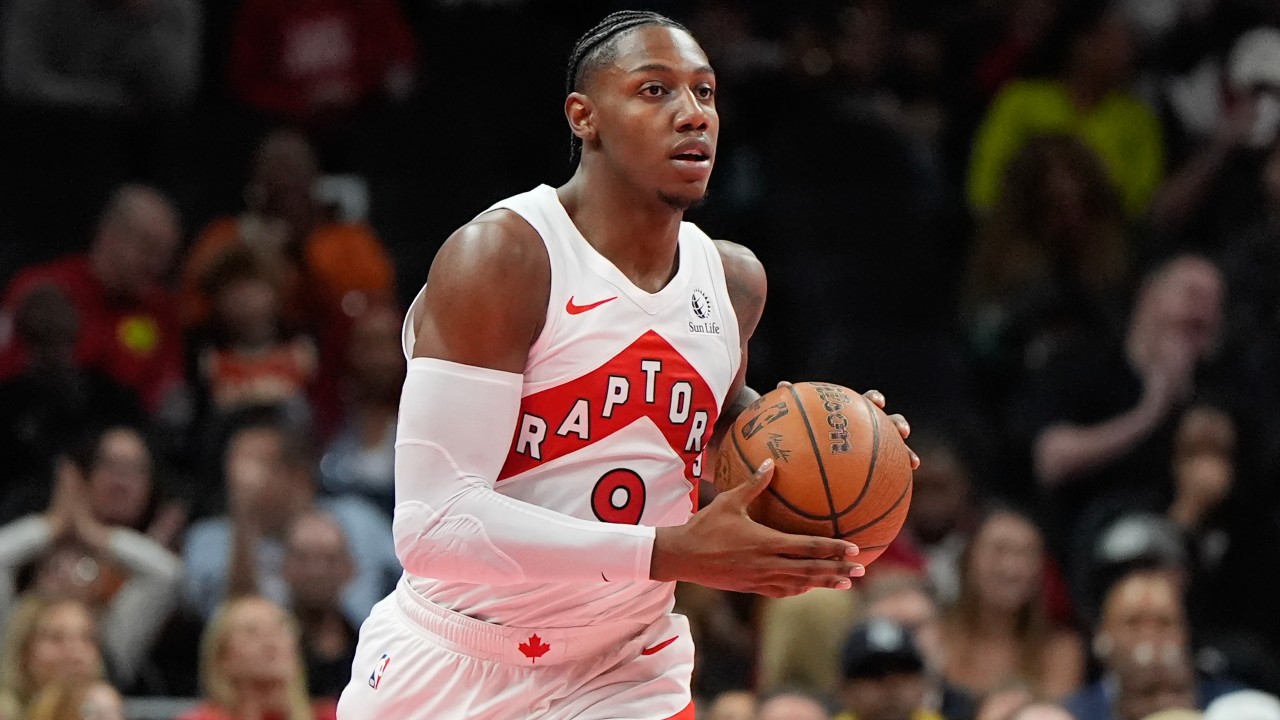
WHAT DOESN’T KILL YOU
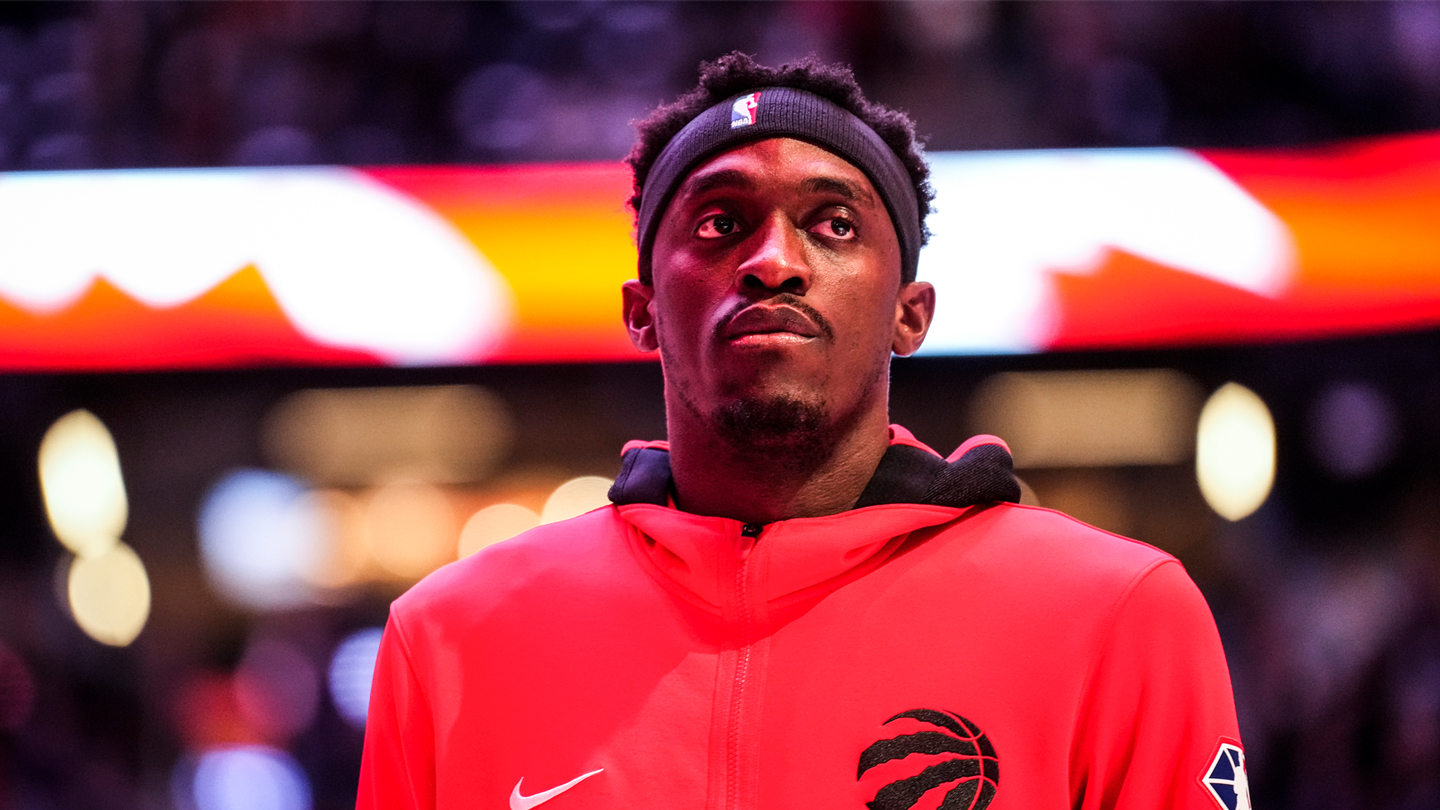
T
he most important moment in Pascal Siakam’s best season came at the lowest time. The Toronto Raptors forward had invited himself into head coach Nick Nurse’s office at Scotiabank Arena and the two men began to talk about work. Things had not been going well. It was early December, and the Raptors were in a free fall, having lost nine of the 12 games Siakam had played since his return from off-season shoulder surgery. His individual numbers were… fine, but his return had hardly been the lift everyone was expecting, and he seemed a step slow on defence. It was concerning for a team trying to forge an identity around a high-energy, ball-hawking style to be flailing so desperately. Siakam — in many ways the prototype for the type of long, athletic players the Raptors bet on (‘Vision 6-foot-9’ the team’s unofficial nickname) — was part of the problem, and maybe a big part.
Teams rarely struggle because of one player, but in Siakam’s case the top-line data wasn’t encouraging. The sample size was small, but with him back in the starting lineup, the Raptors’ defensive efficiency had plummeted to 29th in the league, and losses followed. The eye test wasn’t doing him any favours either. Sure, the Raptors were without OG Anunoby and Khem Birch for stretches, and were bound to have hiccups as a young team trying to figure out Nurse’s notoriously precise defensive schemes. But it was Siakam, a six-year vet and the team’s highest-paid player, who often was late closing out to shooters or scrambling to defend the paint or even sprinting back on D. Nurse’s defence demands individual players make multiple efforts — almost having to be two places at once. When it works, it’s stifling, but a weak link can break it.
A player struggling to find form after injury is normally not news, but Siakam was under scrutiny. After breaking out during the Raptors’ championship season and turning in an eye-opening start to 2019-20, his play had fallen off significantly in the so-called “bubble” in Orlando. When the Raptors relocated to Tampa for the 2020-21 season, Siakam’s game didn’t follow, and red flags popped up in its place: there was a team suspension early in the season and a blow-up with his head coach later in the year. In between, the joy he’d carried everywhere on the court seemed absent. So when he started slowly this season — even after an injury — it was hard not to think, ‘Here we go again.’
As he sat with Nurse just off the Raptors’ locker room, the pregame bustle beginning in the arena bowl outside, Siakam wasn’t among those worried. He knew where he’d been, the soul-searching he’d done, the reps he’d put in. He knew it was only a matter of time until his game came back, better than ever. And perhaps most importantly, he knew when there was an issue, it was better to talk about it before it became a problem.
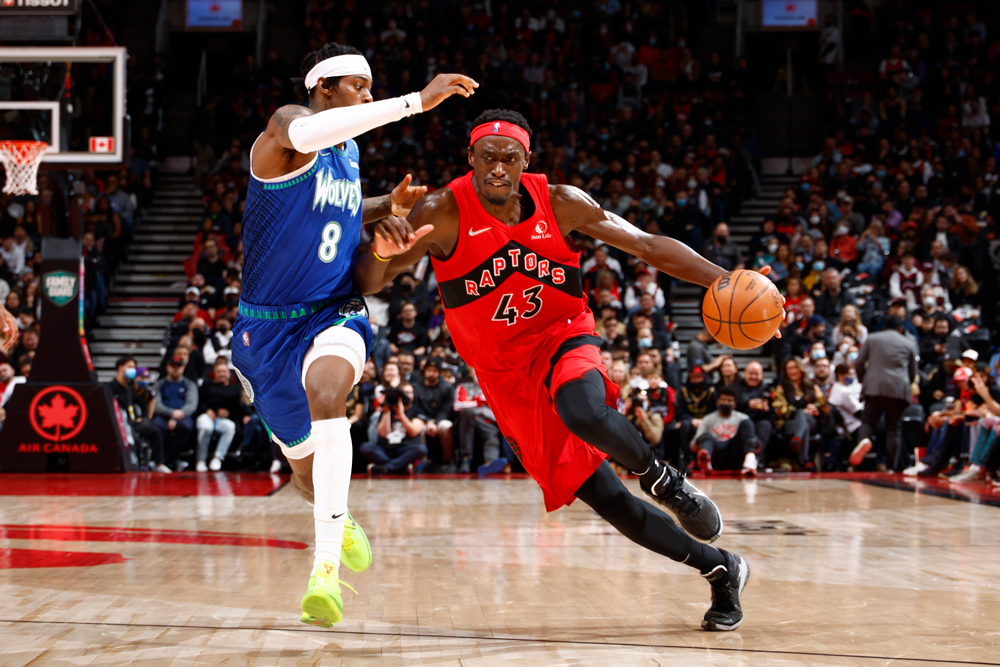
O
n Sunday evening under the theatre lighting at Madison Square Garden in New York, the Toronto Raptors will wrap up one of the most encouraging, surprising and enjoyable regular seasons the franchise has ever had. Just one year removed from the ‘Tampa Tank’ — the short-lived tour through the NBA lottery that yielded the team the 2021 No. 4 pick used on star rookie Scottie Barnes — the Raptors are back in the playoffs for the eighth time in nine seasons and the first in the post-Kyle Lowry era. Fred VanVleet was named an all-star, Anunoby took a nice step forward, albeit between injuries, Nurse deserves Coach of the Year recognition, and the likes of Precious Achiuwa, Chris Boucher and Gary Trent Jr. have shown the potential to be the kind of elite role players any contending team needs.
But the Raptors’ turnaround and so much of the promise for the present and future have been fueled by Siakam’s re-entry into the conversation as one of the NBA’s best players. His slow start hurt his case as an all-star, but his relentless all-round play since early December could — and arguably should — earn him all-NBA honours for the second time in three seasons. Since his meeting with Nurse, Siakam has proven himself among the game’s best and most versatile players; a star who can lift his team with his play. “He’s making the three ball a little more frequently. He’s improved going left. He used to be 100-per cent right but now he’s got a little pull-up going left that makes him very difficult to guard” says Philadelphia 76ers head coach Doc Rivers. “He’s playing sensational basketball.”
The Raptors have motored along at a 54-win pace since early December, and Siakam has been the gas, averaging 23.5 points, 8.7 rebounds and 5.5 assists over nearly 60 games. For context, no other Raptor — not peak Vince Carter nor championship-season Kawhi Leonard — has ever matched those thresholds, and the only other players doing it this season are some of the very best on the planet: Giannis Antetokounmpo, Nikola Jokic, LeBron James and Luka Doncic. But that’s just part of it. “For me, I think the numbers are great,” says Nurse. “But he’s just playing so good in general. The rebounding, the defence, the leadership. It’s not just numbers, man. It’s winning basketball, it’s winning plays. That’s what I get wrapped up into.”
The examples are endless. Just this past week Siakam saved a win over the Atlanta Hawks when he went chest-to-chest to turn away De’Andre Hunter at the rim and then scrambled to the three-point line to deny Bogdan Bogdanovic the wide-open three in the final moments. Siakam’s signature plays this season may well be his consecutive blocks on the Miami Heat’s Jimmy Butler late in the fourth quarter of Toronto’s epic triple-overtime win over the East’s No.1 seed back on Jan. 29.
His versatile game has always contained multitudes, but now the bag is overflowing and he can pluck out what he needs to suit seemingly any situation. The Boston Celtics opted for single coverage to take away his play-making options one night recently. Siakam hung 40 points on them and still had enough juice left to rise up for another pair of key blocked shots to preserve the win in overtime. Two days later, on March 30, the Minnesota Timberwolves opted to swarm him, forcing him to give up the ball; classic superstar treatment. No worries. Siakam posted a career-high 13 assists on his way to a triple-double and another win as the Raptors marched up the standings in the East.
For Siakam, his success this season is both an affirmation of progress made and the beginning of a new chapter. He’s transitioned from a player who used to attack without a plan, relying on his athleticism and skill to make plays, to one who probes the defence for soft spots, patiently manipulating possessions until he can take advantage of them. He’s playing the game smarter, and leveraging his size, skill and shot-making abilities more easily. The best part is that he’s just getting started.
“I can for sure get better,” he says. “[But] it’s humbling just knowing where I come from and the things that I’ve been through as a person, as a basketball player. It just shows that the storm eventually ends.”
Ah, the storm. It’s part of Siakam’s story now, joining his metaphorical Wikipedia page just after the tale of his almost unfathomable rise from basketball obscurity to the peak of the sport. It never gets old: The youngest in a family of six children from Douala, Cameroon, Siakam was a soccer-loving priest-to-be until he graduated from seminary school. At 18, having only attended a couple of local basketball camps and played occasional pick-up games, his fluidity, bounce and rangy six-foot-nine frame caught the eye of evaluators at a Basketball Without Borders camp he’d attended mainly so he could visit his sister in South Africa. After earning a scholarship to God’s Academy in Lewisville, Texas, Siakam got just one college offer, from New Mexico State in Las Cruces, one of the few corners of the U.S. that NBA talent evaluators rarely find time to visit. He red-shirted his first season in 2012-13, needing the time to learn the nuances of the game. He proved to be an athletic genius. In his third year of organized basketball, he started at a competitive Division 1 program and was named Western Athletic Conference Freshman of the Year. The following season he was the WAC Player of the Year, leading New Mexico in scoring and rebounding.
He entered the NBA draft and was taken 27th overall by the Raptors. The first NBA game he ever attended was at Scotiabank Arena and he was in the starting lineup. He won a G-League title and was named Finals MVP as a rookie, was a fixture in the rotation of a 59-win team in his second season and started on an NBA title-winning team in Year 3 while winning the league’s Most Improved Player award. He signed a four-year contract extension that summer worth $136 million, and was an all-star and made second-team all-NBA in Year 4. In sum, Siakam went from not playing basketball to being voted as one of the 10 best players in the world in eight years.
Despite its speed, it wasn’t a journey without challenges. Siakam arrived in rural Texas as a teenager who primarily spoke French. He was a continent apart from his family when his father died in a car crash in 2014, and had to mourn that profound loss alone in a dorm room in Las Cruces. But basketball-wise? Siakam was a rocket ship that never veered in its ascent, let alone stopped to refuel. His was less feel-good story than Disney script.
Which is what made what followed — the 15-month slog through a pandemic, poor play, social media abuses, sour faces, illness, hard feelings, injury and trade rumours — so jarring, and his slow start this year the subject of so much concern. Was Siakam’s rise real? Or was the fall a lasting correction, the equivalent of a housing bubble finally bursting? In the NBA, reputations can turn as suddenly as one of Siakam’s patented spin moves, and for more than a minute it looked like he was the one caught leaning the wrong way.
If there was a moment that seemed to define it all, it came in March 2021 in the visitors’ locker room at Rocket Mortgage FieldHouse in Cleveland. The COVID-ravaged Raptors were in the midst of a 1-13 month and got blown out by the lottery-bound Cavs. After contributing neither a point, rebound, assist nor free-throw attempt in the first eight minutes of a third quarter the Raptors lost by 14 points, Siakam didn’t see the floor again. He was seething and exploded on Nurse after the game. The exact words used are sealed by locker-room Omerta, but it was ugly, personal and degrees beyond any typical player-coach confrontation.
It wasn’t just the blow-up, though, it was also who was doing it. The anger and frustration simply weren’t Siakam’s MO. “It was just a little uncharacteristic for his personality,” says VanVleet, who has played his entire career with Siakam, and has shared the mantle of team leadership with his friend since Lowry left last summer. “And I think that was also just a build-up of things, you know? That was just the straw that broke the camel’s back. It had been building up all year. Nick had been riding him so hard throughout the season and there was a big lack of communication; we were losing and Pascal was taking the blame. … It’s unfortunate that it got out, but it’s part of the process, a part of the journey.”
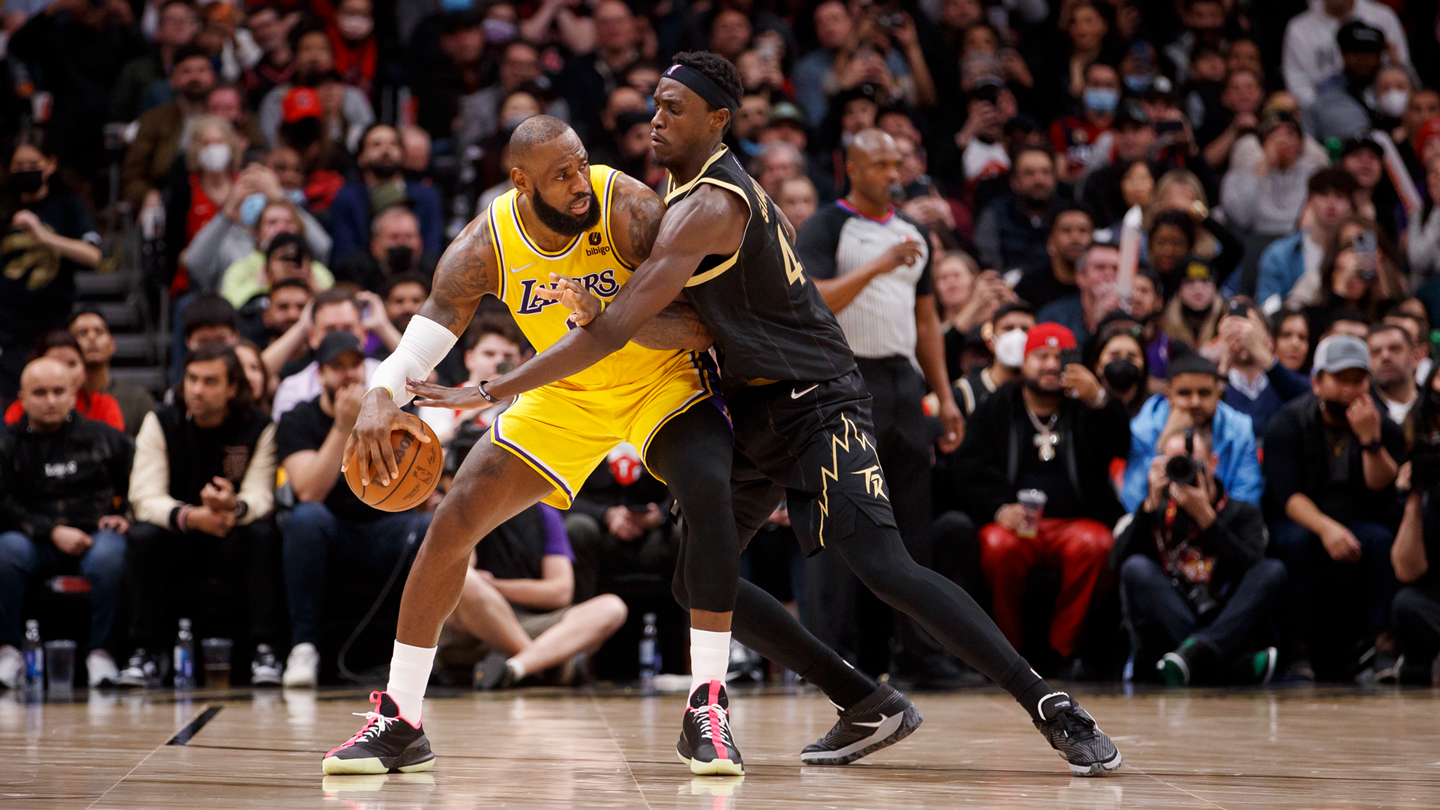
T
he journey that led the Raptors and their star player to such a tense spot begins with the pandemic. It was unnerving for everyone, but for Siakam, who is anxious enough about germs and doctors and hospitals that even a relatively routine arthroscopic shoulder procedure filled him with dread, the prospect of a global pathogen was a brain-bending moment. When the Raptors came back from their last pre-pandemic road trip having just wrestled with Rudy Gobert, the NBA’s patient zero, fear was tangible. “Oh, he was panicking,” says Christian Siakam, who lives with his brother. “The whole time we were in isolation, waiting for his test, he was scared.”
When the lockdown hit, Siakam took it to heart, burrowing into the handsome brownstone he shared with Christian at Bathurst and Lawrence. Due to his visa situation, leaving for the US — where his teammates and most other NBA players were able to find workout facilities even relatively early in the pandemic — was not an option. There were no trips to the grocery store, even, and as the neighbourhood’s only six-foot-nine NBA player, one who guards his privacy, mind-clearing walks weren’t on the menu either. It was movies, video games, cards and online piano lessons — and no basketball training. The Raptors outfitted players with home fitness equipment to get them through, but it was not an ideal situation. “I was telling Masai [Ujiri, Raptors president] my concern because Pascal couldn’t work out. Like any other player, he’s going to put on weight, he’s going to be out of shape and he’s going to have zero rhythm once the season starts back up,” says Siakam’s long-time agent, Todd Ramasar. “There won’t be enough runway to get back in shape and everything else. The situation wasn’t like, ‘Hey, you guys, were going to sneak you into this gym at Drake’s house or somewhere else.’ There wasn’t any of that. There was zero solution because everything was all shut down.”
When Siakam finally was able to cross the border and prepare for the NBA’s August 2020 restart, his agent’s concerns were realized. “We were joking,” says Ramasar. “It was like, ‘Pascal you’re looking like Christian [his huskier brother]. You got an ass now.’”
But the lack of fitness and added weight proved to be no laughing matter. Siakam’s play suffered. Without his trademark quickness, he was more susceptible to smart gameplanning. In the crucible of the Raptors’ second-round playoff series against the Boston Celtics, it all unravelled. “We just kept him off his right hand, slid over and showed him bodies and hands when he spun and waited for him to miss outside shots because he had no confidence,” says a former Celtics staffer, describing the team’s approach for the Raptors star. It worked: Siakam shot 38 per cent for the series, went 4-of-32 from three, got to the free-throw line just 22 times over the seven games and committed five turnovers in Game 7.
The online mob was vicious in its attacks. His agents debated whether to let him know how vitriolic the commentary had turned, but decided to advise him rather than have him wade through the muck alone or unaware. Some of the comments were baldly racist, but the tweet that cut the deepest? The one about him disappointing his late father.
In the NBA’s brief off-season Siakam went to work. He wasn’t happy with the way things had finished and wanted to fix it. His agency rented the gym at El Camino College in Los Angeles, and everything he needed was on-site — from meal preparation and fitness equipment, to blood analysis and plenty of floortime with Rico Hines, the workout guru who had helped Siakam develop from a raw college post player to a high-usage NBA wing. But the Raptors, concerned that a player they had so much invested in had flamed out so badly in the bubble, were in “show me” mode. Ujiri has never been shy about doling out tough love, and when he visited Siakam along with Nurse and general manager Bobby Webster a few weeks into the off-season, there were no ‘attaboys on offer. They weren’t happy with the progress being made and said as much. For a player coming off his first real professional adversity, it was a tough pill. “I know Pascal felt a certain way about it and I got really pissed also, because he was working his way back in shape, doing everything in his control,” says Ramasar. “And Masai criticized him. It was like they weren’t seeing the work he was putting in, like they were losing faith in their guy, like they felt he had gotten complacent.”
That interaction set the stage for the 2020-21 season, which featured the added complication of the Raptors relocation to Tampa. The sudden rush of NBA players and staff was more than the Tampa real estate market could handle. Premium rentals were in short supply — players would be touring a listing and meet a teammate on the way in or out. Siakam spent nearly two months in a hotel before finally getting something organized. For a committed homebody, coming off months in isolation in Toronto and the bubble in Orlando, it was not ideal. But that was just background to the hard feelings left over from the previous season and the summer. “You could clearly see that he wasn’t the guy I met my first year, that I won a championship with, who was always ready, always had a lot of energy,” says Boucher. “You could just see it, day-to-day. You didn’t know if maybe he was going through something.”
It didn’t help that the virus was still rampant. The NBA required players to mostly keep their distance when not playing or practising; Siakam was keeping his distance anyway. The team kept losing, and he kept taking heat, some of it justified. “Where he was special defensively [before]I think last year, that was where the static came, at least from inside the locker room, was his defence took a hit,” says VanVleet “It could have been because our team wasn’t very good as well, and he took a lot of blame for that too.
“I think his natural reaction was to withdraw and it’s you against the world,” the point guard continues. “I think everybody caught strays in that, myself included. Me and him definitely had a few conversations, one where I had to let him know like, ‘I’m with you, but I can’t defend you if you’re not going to play hard, if you’re not going to defend.’
“But you got to wrap your head around his experience as well, right? I’m gonna put my arm around a guy when he’s in the gutter and no one’s f—ing with him no more, that’s how it goes. I was there for him.”
Similarly, according to Nurse, it was never personal, simply a coach holding a key player to a high standard. “Just like with the team, I’m trying to keep polishing and adjusting and helping them find ways they can improve. … That’s all I ever do, is continue to send those messages,” the coach says. “We had a conversation about [the locker room argument]— Bobby and I and Pascal — a few days after it happened. It wasn’t, from my standpoint, a very big deal. I understand his frustrations and stuff, but I didn’t regret anything I said to him. I just asked him to play harder, and that was it. Listen, I really like the guy, as a person and as a player. It was probably 1/1000th of a per cent of the deal that people made out of it. It was not a thing for me at all.”
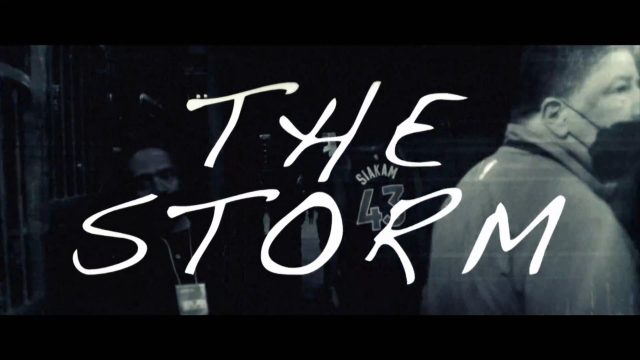
I
ronically, it was COVID that helped turn things. Siakam, like nearly all the Raptors, came down with it in late February, just before the all-star break, and missed six games over the course of 24 days. Having the virus helped him overcome his fear of it, and that he lost 20 pounds while sick seemed to help his game. Playing lighter allowed him to play quicker. Siakam’s best basketball of the lost season followed. He averaged 23.7 points, 7.3 rebounds and four assists — a preview, in retrospect, of what was to come this season. As the Raptors shifted to tank mode, Siakam resisted coming out of the lineup; he wanted to keep his roll going. When he ran into a screen by Jaren Jackson Jr. in a game against the Memphis Grizzlies in early May 2021, the decision was taken out of his hands.
Recovering from his surgery was no fun, requiring hours of tedious exercises and physical therapy to stabilize the complex joint, and months without the off-season competition that keeps players sharp. The last stage was getting back on the floor and getting up to the superhuman speed and physicality of an NBA game. Siakam wasn’t quite there in the first few weeks after his return, but he was unbothered.
“He was very poised about it,” says Christian, who works as a development coach with Raptors 905. “He knew it was just about getting his legs, his rhythm.” The social media criticism and doubts in the media washed over Siakam. Having already been dragged through the metaphorical gutter, he had learned how to tune out the noise. He wasn’t stressed. He was at peace. But the team was struggling, and he knew they were expecting more — and needed it. So rather than let things go unsaid, Siakam poked his head into Nurse’s office door in the hours before a game against the Washington Wizards.
“Got time to talk?” he asked. It was proactive, and for Siakam, something new.
“I think that’s something we learned from last season,” he says now. “We were like, ‘We got to communicate better and tell each other what we feel like.’ And I asked him, ‘What do you need from me? Just tell me exactly what you want from me, and if you feel like I’m not doing that, tell me, and if I feel the same, I’ll tell you. And I think we owe each other that respect.’
“I think that it was just part of my growth,” he continues. “Before, it was easy for me to just be like, ‘Yeah, I’m just gonna stay on my side because that’s kind of like the character I am.’ But with wanting to be a leader and wanting to evolve, I feel like that’s something that I needed to do; just take the initiative and go in to him, making sure that at the end of the day, we’re here, we all have a common goal every day and that’s all we care about. It’s nothing personal.
“And yeah, I think it helped.”
Since joining the Raptors, Siakam had been surrounded by veterans. Almost overnight he became one, and he had to exercise new skills off the floor as well as on it. “Pascal is one of the smartest guys I ever played with. And I think that was a learning process,” says VanVleet. “Where it’s like last year, you know, he went as the enemy, it was him and Nick, right? And this year, he was like, ‘I’m gonna just address it head on, and see what’s going on.’
“Nick’s door is always open. You may not always like what you hear, but he’ll give it to you straight,” VanVleet continues. “There’s no better communication than direct communication, and there’s no better feeling than being on the same page with your coaching staff. It puts you at peace; it puts you at ease. They’re coaches. Their job is to help you and help you get better.”
The coach was in Siakam’s corner. After all, it was Nurse — back when he was an assistant — who helped unleash his potential as a second-year forward, giving him the greenlight to rebound and lead the break as part of The Bench Mob, the elite second unit where Siakam first made his name. Nurse wasn’t about to let a rough stretch derail a success story. “I think all that stuff in the beginning [of the pandemic]disrupted a rhythm for him, and I’m just sitting back, watching it unfold and saying, ‘We got to be patient here. Something is off-course, but we know what we’ve got here. We’ve got a good guy and a good worker and great player, and we gotta let it play out a little bit.’”
When Siakam poked his head into his office and they sat down, Nurse’s response was simple: “I was like, ‘Listen, you’ve been playing pretty well, considering you haven’t played for a long time, but I’ll know you’re all the way back when you’re defending and rebounding and running the way we know you’re most successful. That’s all I’m asking, Pascal,’” Nurse remembers. “And he was like, ‘Okay, cool. Got it.’”
Siakam went out that night and put up 31 points against Washington, getting to the free-throw line 12 times in a comfortable win over what was then a still-competitive Wizards team. The Raptors haven’t looked back, and Siakam’s been playing all-NBA basketball ever since.
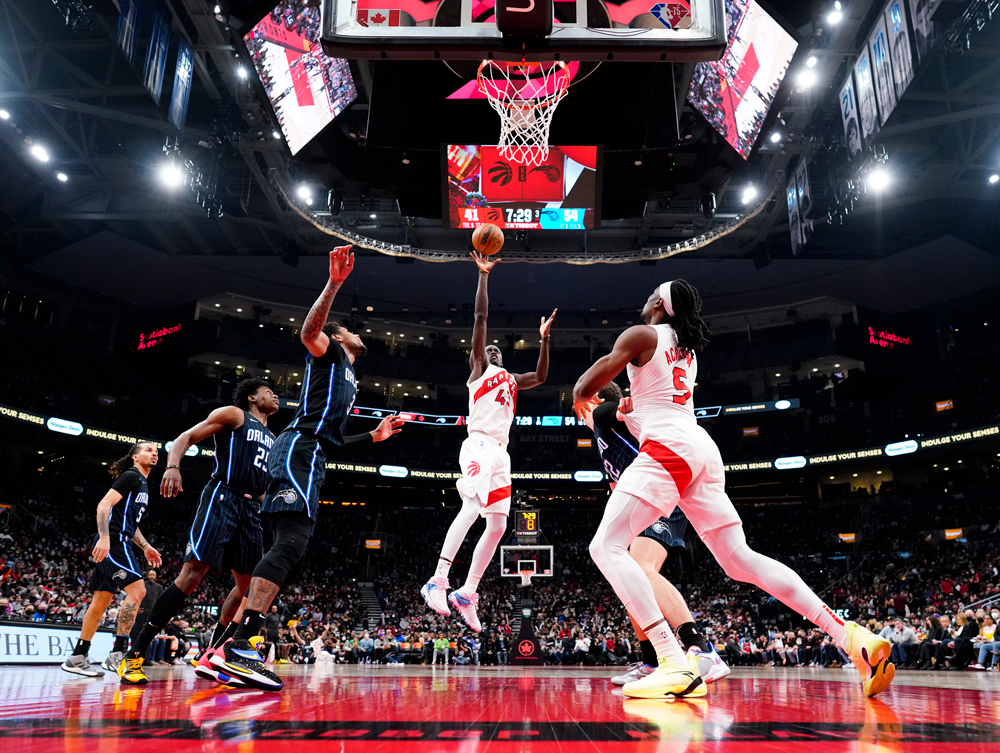
T
hat Siakam got to this point — the engine on a team that has exceeded any external expectations, his game better than ever, and back to playing with the kind of joy and passion that was a hallmark in the first few years of his career — didn’t come by accident, or through talk alone. Even as he grinded his way through rehab and listened to his name being kicked around in trade rumours, Siakam was doing the work needed to make sure his basketball identity crisis didn’t go to waste. In just 10 short years he’d turned himself into a world-class basketball player, but he still had plenty to learn about managing the expectations that come with that status.
“There was a lot of times where if you didn’t do well or things didn’t go your way, or things happened that was out of your control, all you wanted to do is question everything and try to understand why it’s happening to you,” he says. “And I think going through that, the growth that I had, obviously with COVID and thinking more and having this time to sit with yourself, I’ve just learned a lot of different things — about myself and about life in general.”
Siakam began a discovery process. He met with a sports psychologist. He re-examined his relationship with social media. He looked for insights on podcasts and TED Talks. He’s not a big reader, but among his favourite video resources are motivational speakers, Les Brown and Inky Johnson. Each of them shares a message that resonates with Siakam, who left home at 12, left Cameroon at 18 and lost his father at 20: Challenges and negativity are opportunities for growth, and dwelling on things that have already happened or seem unfair can only harm your ability to deal with the next challenge or hurdle. It’s a useful perspective, whether trying to shake off a bad half, a losing streak or things bigger, more personal and important.
“I know that when something happens to me, I have five minutes to get mad, scream and do everything, and then I tell myself, ‘I can’t change it,’” says Siakam. “And that’s just the reality of it. There’s nothing I can do about it. All I can do is continue to move on and try to get better. And I think that’s just the mindset that I have with the experiences that I’ve been through.”
There have been other factors. In the off-season, the Raptors added Earl Watson to their coaching staff. Watson earned a reputation as a high-IQ player as he carved out a 13-year NBA career as an undersized second-round pick. It was a hire advocated by Siakam’s agent, Ramasar, who played with Watson at UCLA. Watson’s wisdom has been recognized by Nurse, who has the former Phoenix Suns head coach sit beside him during games, and Watson has served as a conduit for Siakam, an arrangement not uncommon with stars across the league, where a specific coach becomes a sounding board.
“He’s family to me and I think that just him being willing to kind of like come and help out with me and when I was [recovering from]surgery and working on different things, there’s a bond,” says Siakam. “He knows the game and he’s been around some of the best. So just picking his brain, working on different things on the court and also just having someone in the staff that I felt like I was connected with … it’s been a great part of my journey and I’m definitely grateful that he’s here.”
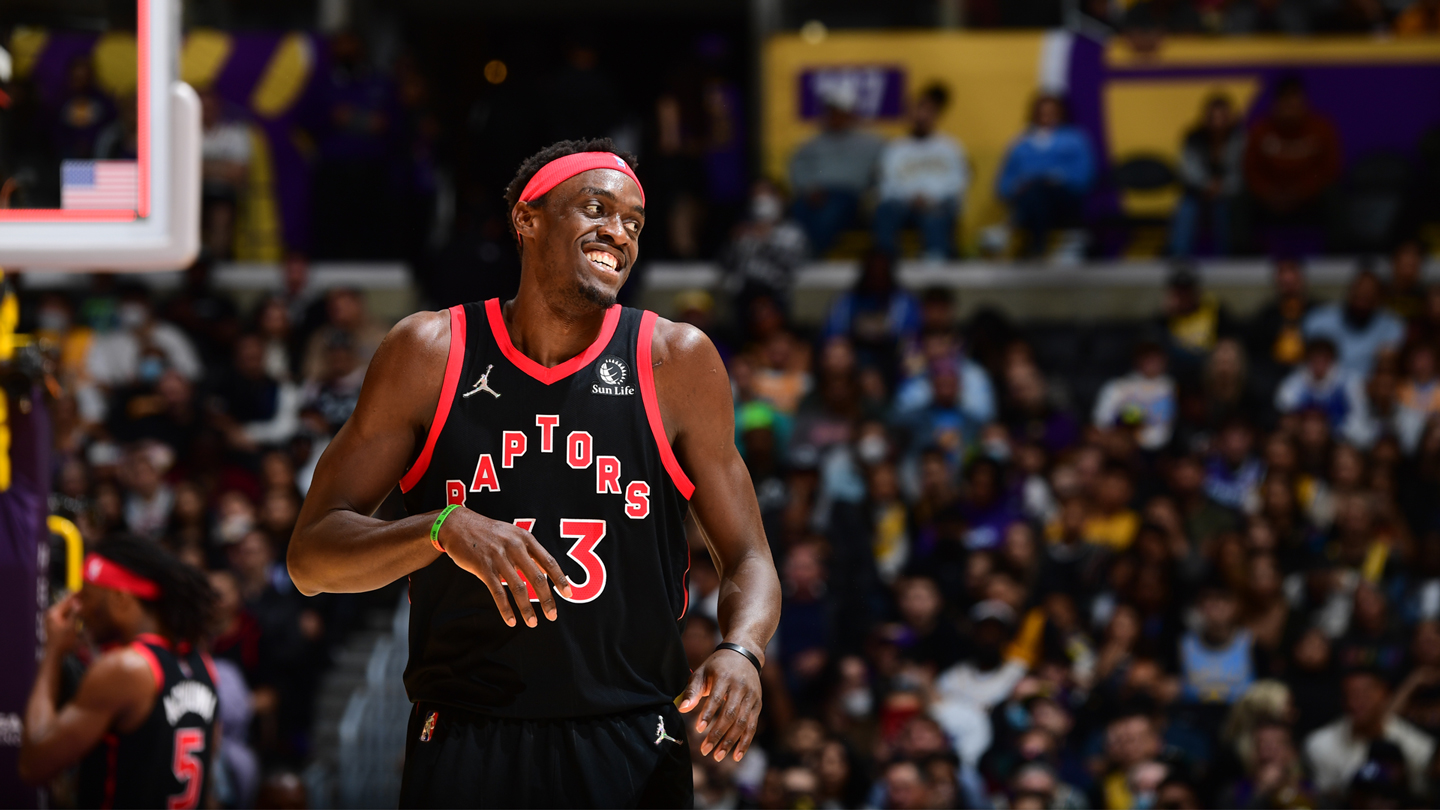
S
iakam turned 28 this past Saturday, and he celebrated, though maybe not in the same way as when he was 22 or 23. “I think that [when I was younger]my birthday was like ‘Man, I’m trying to turn it up,’” he laughs. “But now, it’s weird, man. I just want to spend time with family.”
For the longest time, that wasn’t possible. His older brothers were scattered across the United States. He had a sister in South Africa; another in Cameroon with their mother. Siakam himself left home young — first for seminary school, then to seek his basketball fortune. That his father died meant that his family could never be fully whole again, but Siakam’s success has helped bridge the gaps, bit by bit.
Last season, Siakam went viral on social media for all the right reasons when he posted a video of the moment he presented his mother with her new house in Houston, where she has settled to be close to Siakam’s brother, Boris, and sister, Raissa. Earlier this season, he was finally able to bring his sister Vanessa from Cameroon with her daughter, Maya. Vanessa works for Siakam’s foundation and lives in Kitchener, Ont., where another brother, James, also lives with his wife and their newborn daughter, Zhuri. In addition to regaining his footing on his path towards being one of the best players in the NBA, Siakam is proving himself an all-world uncle. “He’s so good with kids, it’s ridiculous,” says Christian. “When I visit Maya and Pascal’s not with me, she gets upset. She’s like ‘Where’s Pascal?’ She likes him so much, it’s crazy. He’s amazing with her. Kids love him. I don’t know why. … They have the best time ever. They chase each other around, laughing.”
Uncle Pascal was on his game Saturday as the family gathered at his house, feasting on generous helpings of Poulet DG — a chicken stew featuring plantains and vegetables cooked in white wine and cream. Isolation seemed forever ago. They laughed, they talked about things they used to do as kids back home. “It’s been everything,” says Siakam, of bringing his family together. “I think going through basketball and being in the NBA, every day we have a game and it’s so easy to forget things that are really important. It sounds cliche, but it’s just the truth. Family has always been important to me. My dad was always about family and wanted to make sure that we were all together. And being able to go see my niece and bring my sister home and my brothers, we all can hang out and have the whole family [together]… [it’s] more priceless, and it means everything to me.”
Siakam’s journey has taken him incredible places and across unimaginable distances at unprecedented speed. In the past two years alone it’s taken him into isolation and illness and conflict, into surgery and doubt, and eventually to a new level of self-awareness, professionally and personally. Now, he’s taken the Raptors to the playoffs again and returned his name to the NBA’s elite.
But finally, after it all, and most of all, it’s taken him home.
Mark Blinch/Getty Images; Vaughn Ridley/NBAE via Getty Images; Cole Burston/Getty Images; Mark Blinch/Getty Images; Adam Pantozzi/NBAE via Getty Images.



